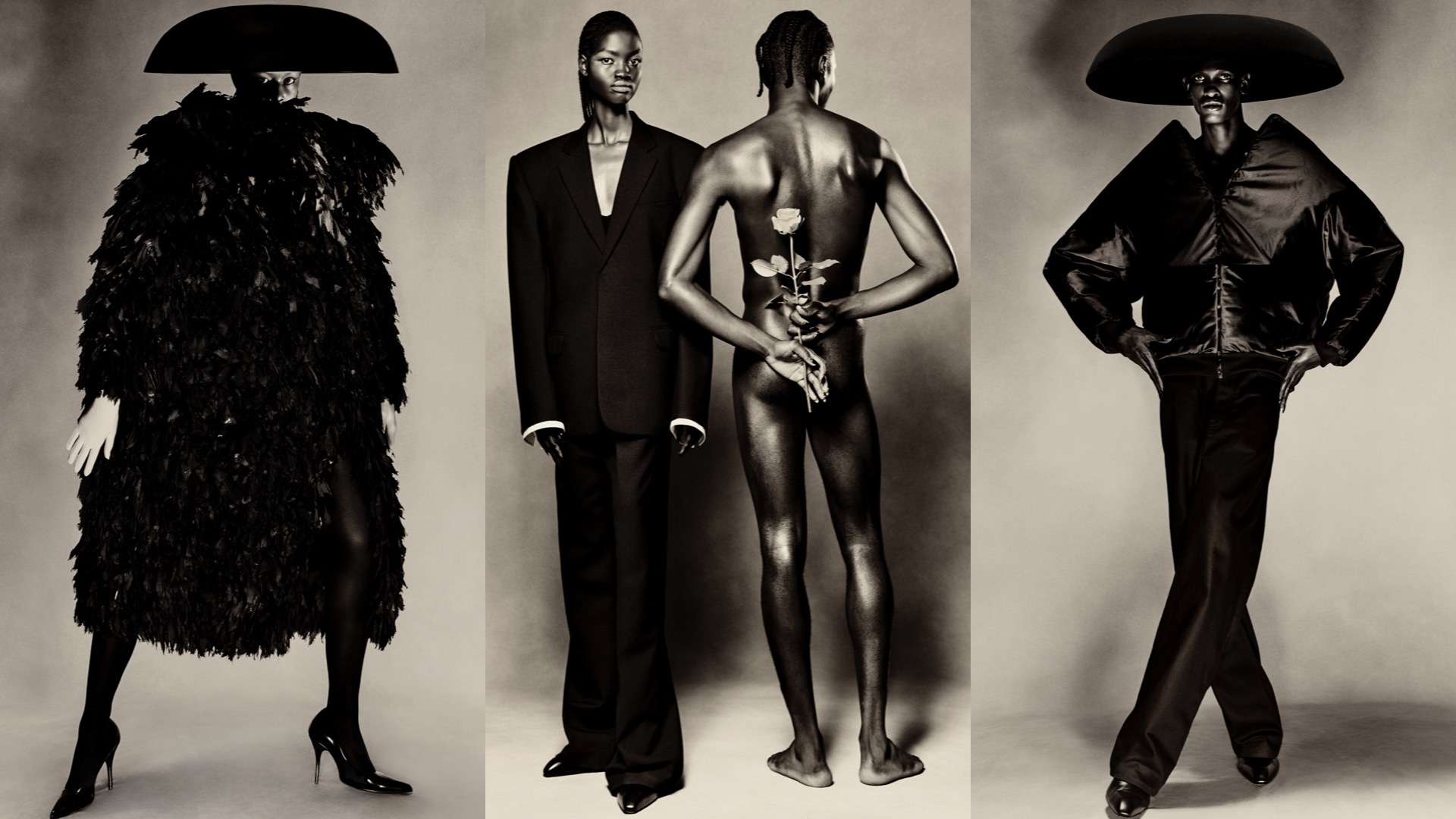This story originally appeared in i-D’s The Darker Issue, no. 365, Winter 2021. Order your copy here.
Demna Gvasalia is one of fashion’s greatest designers. His work is about modernity, about what clothes mean to a generation of young people who are more at home on the Internet than in real-life situations. At Balenciaga, he’s established a contemporary uniform of archetypal clothes — you could even call them banal — elevated to subversive levels of luxury, redefining what the latter means in the twenty-first century. So, when he announced that he would be staging a Balenciaga couture show for the first time, the first since Cristóbal Balenciaga shuttered the doors to his business in 1968 (“there is no one left to dress” he famously declared) it was always going to be an unmissable fashion moment. Expectations ran high. Demna, who made his name with hoodies and T-shirts, would be tackling the insurmountable legacy of Cristóbal, the couturier who Christian Dior described as “the master of us all” .
Spoiler alert: it was the couture show of the century — even if it feels premature to say only decades in.
Demna painstakingly recreated the work of the house’s founder, while also offering a new vision of what couture could mean to young people today. It wasn’t strewn in sequins or feathers (instead Demna encouraged his petites mains to make the embroideries look “destroyed”, almost as if they were found in an old box) or trying to be radically new (as if that would be possible). Rather, it decoded the past, framing it as a means to create a new kind of modernity. “I learned that we cannot only look into the future, we need to look into the past to know where we’re going,” Demna explained after the show, which was held in monastic silence à la Cristóbal, guests clutching the red carnations left on the gilt opera chairs – a nod to the late designer’s favourite flower.
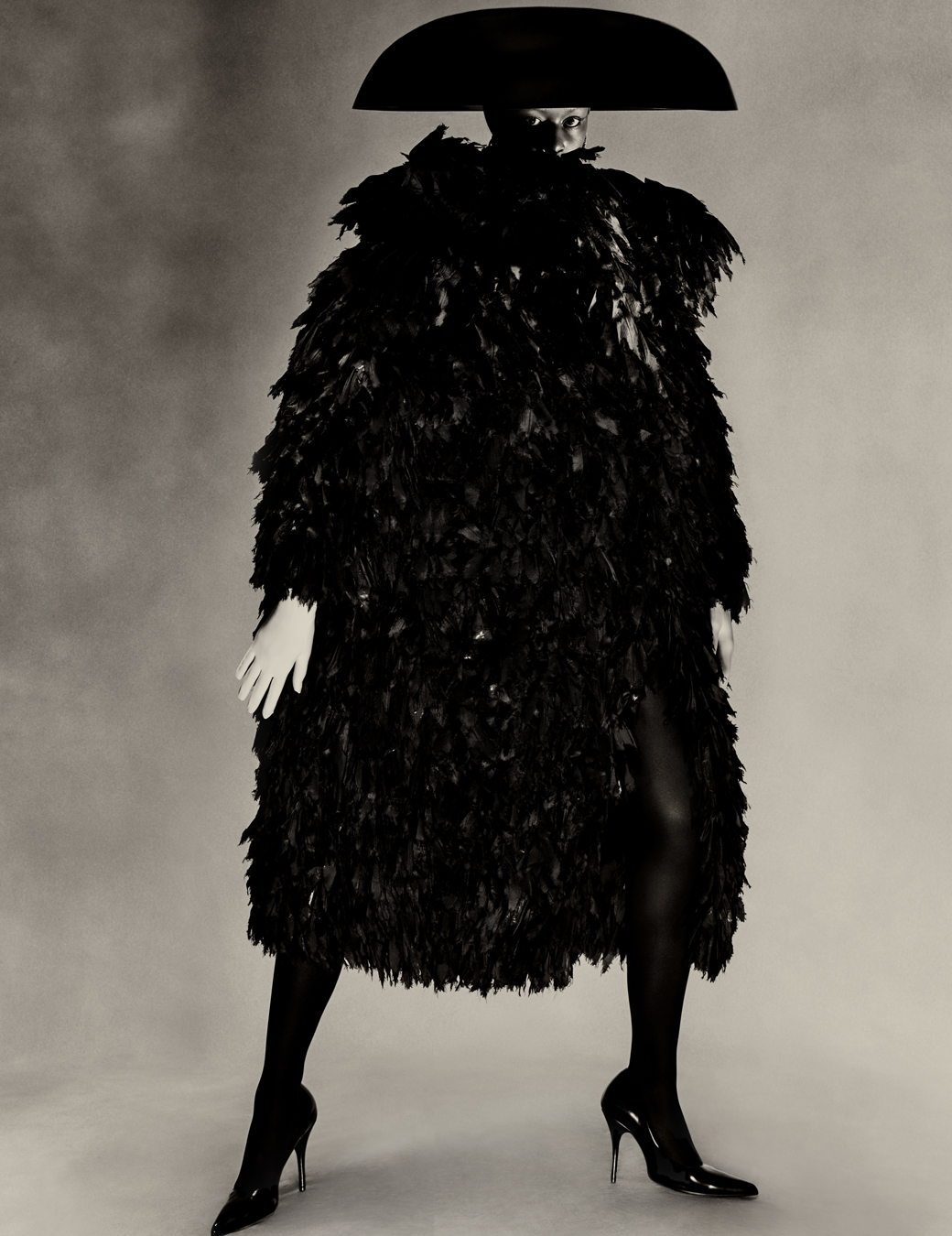
Dressed in all black, with braces on his teeth and the air of a man who has rediscovered his love for what he does, he said that he’s been working on this couture collection for over a year. No budget limitations, plenty of time, and every resource imaginable. Given that he had resisted tackling the legacy of the house’s founding father for the first five years of his role, it took a global pandemic to make him realise that it was time to give in to the inevitable challenge.
The Georgian designer began by overseeing Balenciaga’s purchase and renovation of Cristóbal’s original salons at 10 Avenue George V, reinstating them to their former glory…. ish. Actually Demna had the conservationists make the salons look slightly worse-for-wear, with water damage patches, greasy sockets, stained curtains for a sort of shabby-chic, faded grandeur. The idea was for it to look as if it had been neglected for half a century, rather than pristinely and painstakingly recreated in a few months — which, of course, it was. The salons set the tone for the collection, a meditation on old and new, and a questioning of what constitutes couture, and indeed, modernity itself.
“The pandemic made me also reconnect to myself, take that minute of silence, or like a few months of silence, and to really understand what I love in this métier, as we used to call it,” Demna continued. “It’s not about fashion; I love clothes. I realised that the purpose of fashion is not about the whole frenzy, the white noise, and the whole digital mayhem we’re living through — clothes are the essence of it, my passion, and couture is the best platform for that. Not sneakers and hoodies, which I love doing, and everybody knows that — this is actually what really turns me on.”
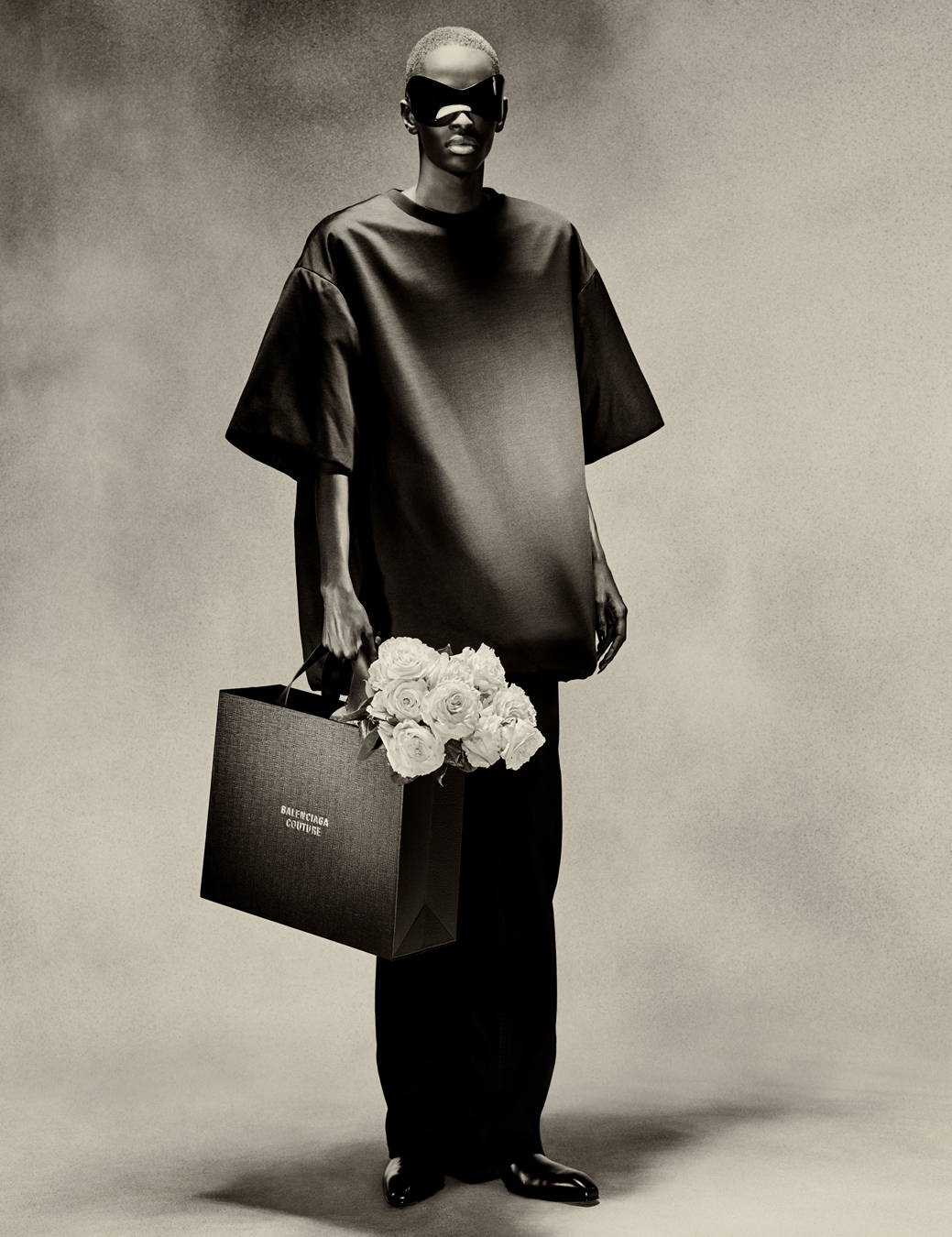
The clothes in question perfectly harmonised the voices of Demna and his Basque precursor, both of whom superficially couldn’t be further apart (more on why that’s not true later). Jeans and T-shirts, yes, but also incredible coats, the most immaculate Spanish-black tailoring, dresses with jutting hips, and museum-worthy gowns worn with flying-saucer hats by Philip Treacy. The denim was sourced from Japan, handwoven on old American looms, hand-dyed, and fastened with real silver, and the T-shirts, made from handwoven silk, were puffed up to chubby proportions and double-lined, taking three months to get right. “It was the hardest piece for me to make,” Demna insisted about the latter. “I suffered for months because it’s much easier to make an embroidered ballgown or even a tailored jacket than a couture T-shirt.”
And of course, there were Cristóbal’s sartorial leitmotifs, like the exaggerated collars standing away from the nape in order to elongate the neck, which the Capote Swan Gloria Guinness once noted, “allowed women and their pearls to breathe”. And the exact recreation of a satin wedding dress, exquisitely simple and yet incredibly complex to construct, with a single seam running down the train like the axis of an elm leaf. “I couldn’t change it,” Demna sighed. “We tried, we added sleeves, we tried to be clever. And then after four fittings, we went back to the original dress because we realised that the way Cristobal did it, there is no way we could make it better.”
Therein lies the genius of Demna’s approach. Yes, he’s the King of Branding — and sure, the most obvious story here is the meeting of Demna’s more normcore-esque sensibility and Cristóbal’s mid-century formality. Couture jeans! Vive la revolution! But ultimately, for luxury houses that trade on the idea of pass-it-down timelessness, all roads lead back to the sacred seams of Cristóbal. What he created can’t be improved upon.
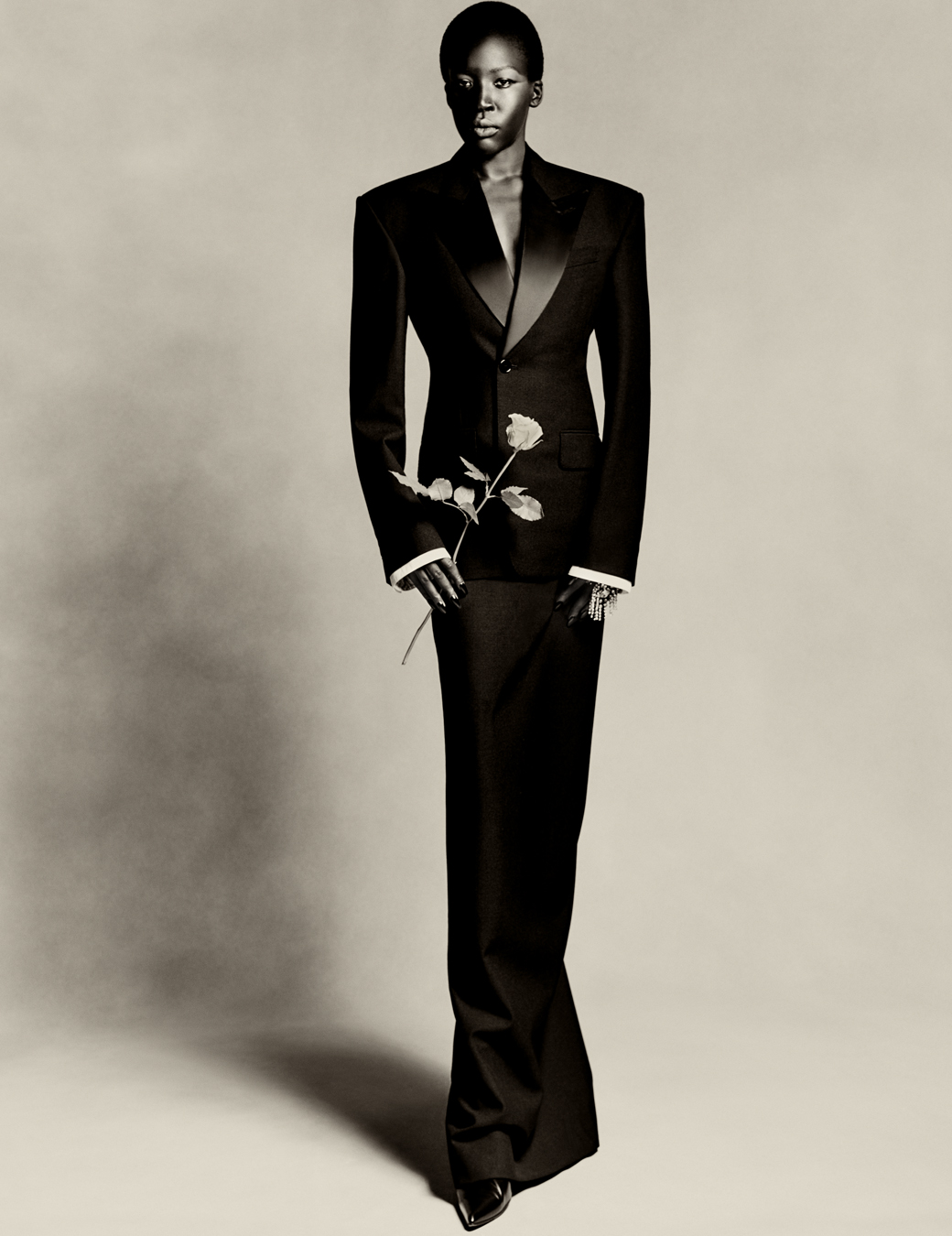
Even in his lifetime Cristóbal had a hardcore cult following, not unlike Demna’s own hypebeasts. Coco Chanel said: “He alone is a couturier in the truest sense of the word.” Cecil Beaton called him “fashion’s Picasso”, while Diana Vreeland hailed him as “the greatest dressmaker who ever lived.” Yet, largely due to the fact that Balenciaga closed his business in 1968 and because he was notoriously reticent, famously guarded and only ever gave one interview, the legacy of Cristóbal Balenciaga has escaped a generation — until now.
Cristóbal was a disrupter of the fashion system. On one level, he defied the Chambre Syndicale de la Haute Couture to show his collections a month later than his peers, forcing buyers and journalists from New York to trudge back across the Atlantic, which they willingly did. He looked to the street for inspiration, riffing on gendarmes uniforms, vinyl raincoats, and the cycling outfits that women took up in the absence of petrol during the Nazi Occupation in Paris. The society doyenne Mona von Bismarck famously had her gardening clothes made by the house — and shuttered herself away for three days when he announced his retirement.
Cristóbal Balenciaga was a modernist and, in many ways, a realist. For the women who were allowed in, it was a temple of bold, daring clothes to make their mark on an increasingly changing world. In 1947, when Dior was cinching the waist and amplifying the calf-skimming skirt, Balenciaga sent out jackets and coats that were convex at the back and curved up in the front of the hip to the button fastening. The look became known as the “barrel line,” the forward-looking, unsung hero of the decade compared to Dior’s heraldic rose-tinted nostalgia for Belle Époque curves. Over the next two decades, he would revolutionise the silhouette and experiment with monstrous proportions and volumes to create his most experimental work.
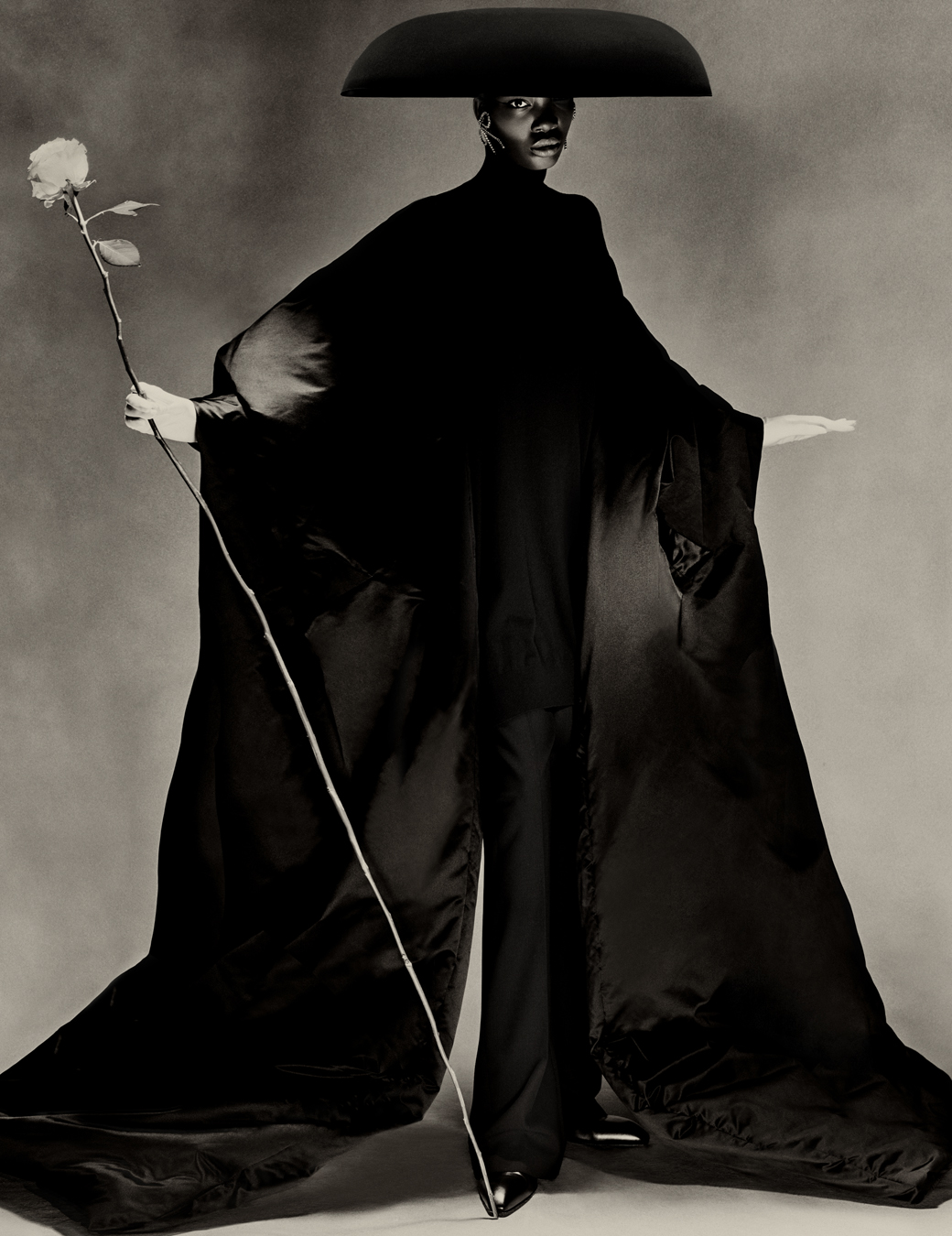
Just as fashion today plays on the notion that a dress can make a woman as creepily elegant as the inhumanly perfect model who walks down the runway in it, Cristóbal established a new way of presenting his clothes way back when. He took the true measure of a woman’s sins, warts and all, and excused them by creating clothes that had a positively transformative power to turn even his predominantly middle-aged clientele into elegant creatures. In fact he was so confident in the metamorphic power of his clothes that he preferred models who were short-limbed and plump, like the women of his Basque hometown, San Sebastian. “M. Balenciaga likes a little stomach,” one of his vendeuses famously observed. His models were also often middle-aged (like his clients) and never pretty. He personally instructed them never to make eye contact or pirouette or smile.
Sound familiar? There’s more than a couple parallels with Demna, his modern-day successor. The refusal to be a part of the system, the street casting, the unexpected references, the doing it on his own terms. By embracing the past in order to make his couture debut, Demna has completely upended the structure of Balenciaga, which in recent seasons has become known for its digital imagery — as well as the parameters of his own work and place in the fashion ecosystem. He saw this as an opportunity to fall in love with fashion again, and, courtesy of Covid-19, he actually had the time to work on getting it right, undistracted by product drops and relentless shows.
“I kind of battle my way through fashion and I wanted to do this as a real-life event to communicate to the outside world, and to the industry, who I am as a designer,” he said of his decision to tackle Balenciaga’s heritage head-on. “It was a challenge to find the balance between the fusion of the architectural legacy, the history, and what I stand for, and how I want to communicate this art of dressmaking for today’s audience, whoever that audience is.”
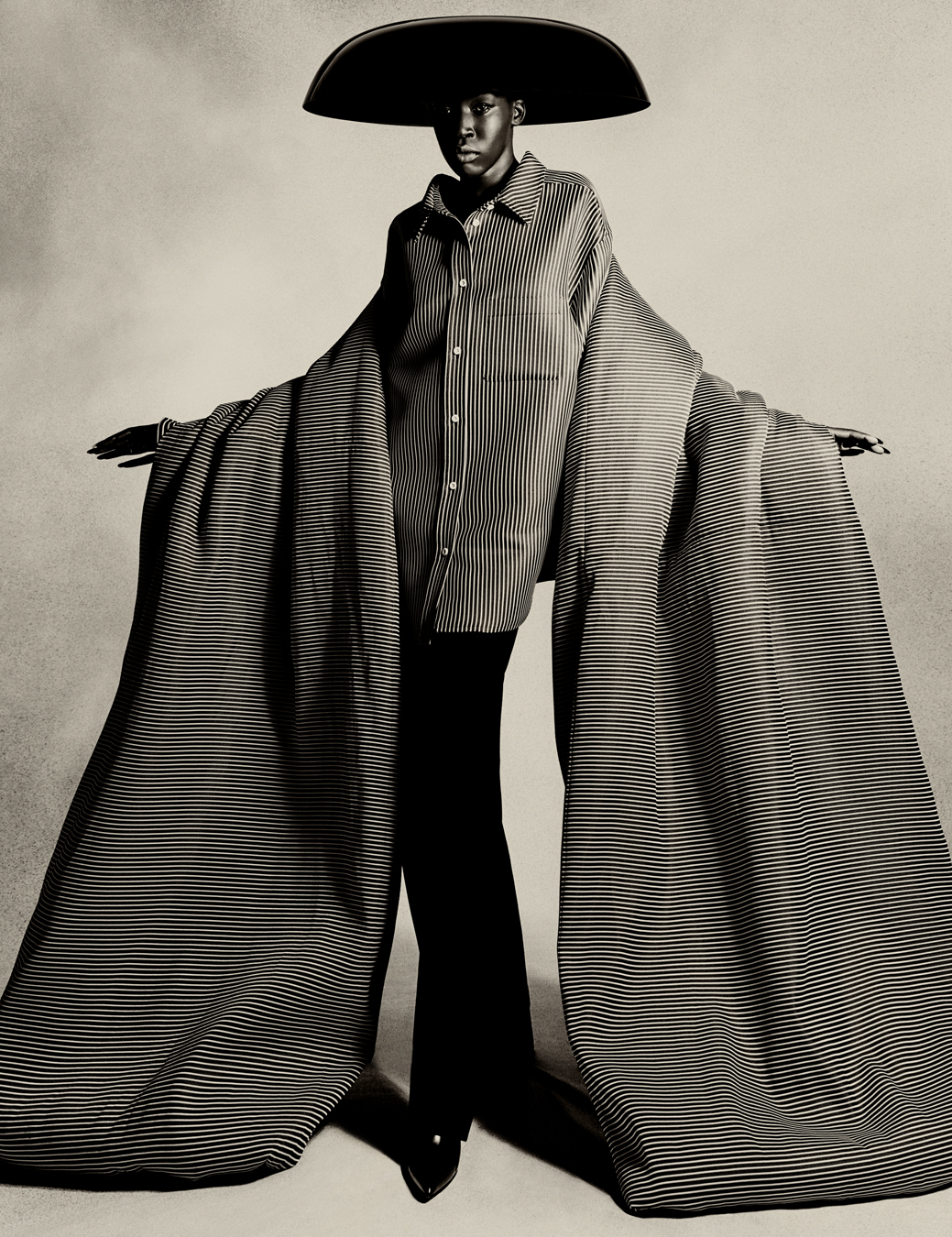
Diana Vreeland famously recalled the audience at Cristóbal’s shows “going up in foam and thunder”. Decades later, the scene was uncannily similar. You could hear the gasps and shuddering sobs as the dramatic silhouettes glided across the beige carpets and through the draped doorways.
Demna said he could feel the spirit of Cristóbal within the walls of 10 Avenue George V. Though we’ll never know for sure, you can bet he’s smiling down in approval, especially considering he once told a friend: “I regret not being younger, because then I could create the amusing but tasteful ready-to-wear the times we live in demand. For me it’s too late.”
53 years later, his wishes come true. Balenciaga once again has couture clients to dress. Cristóbal: a match made in fashion heaven.
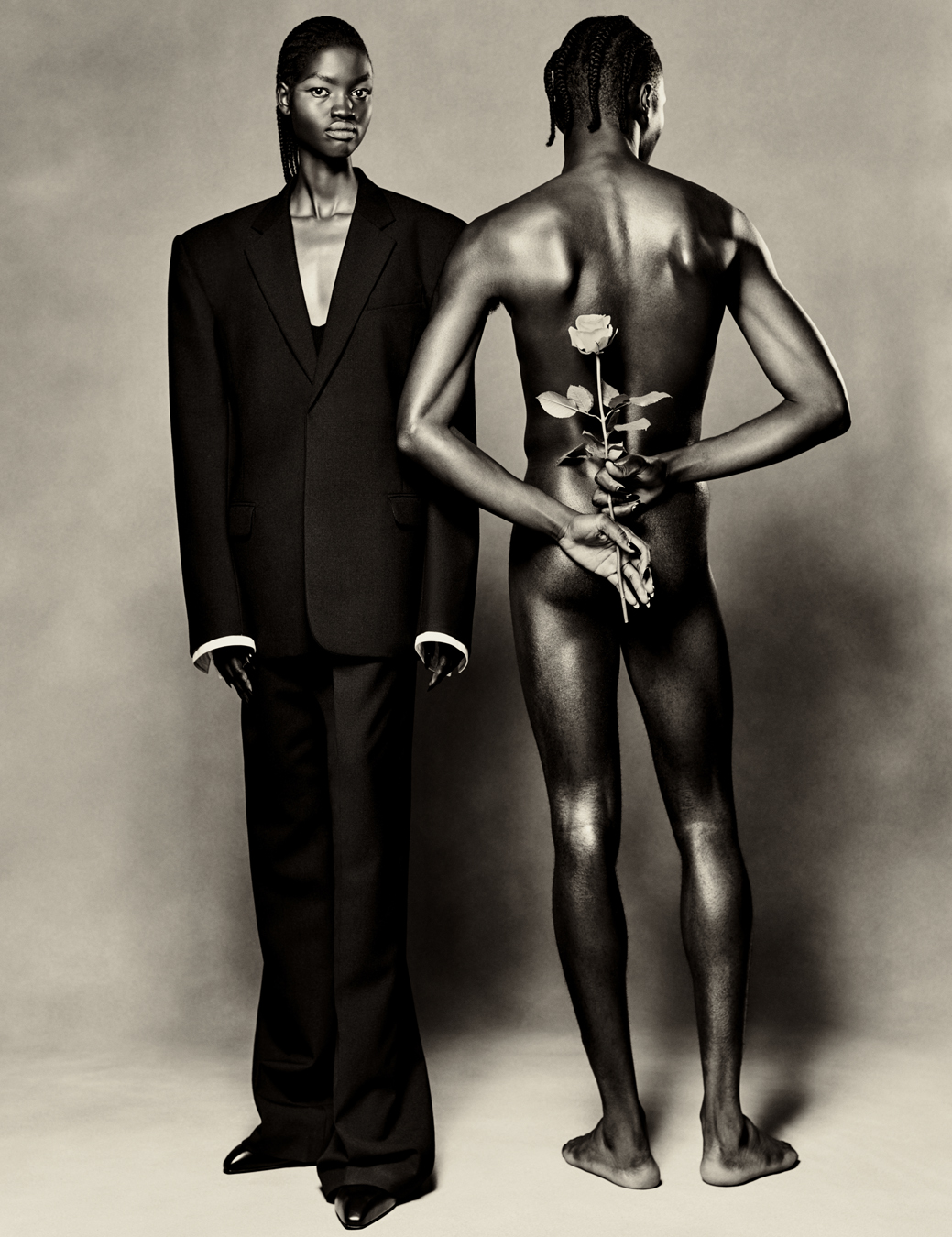
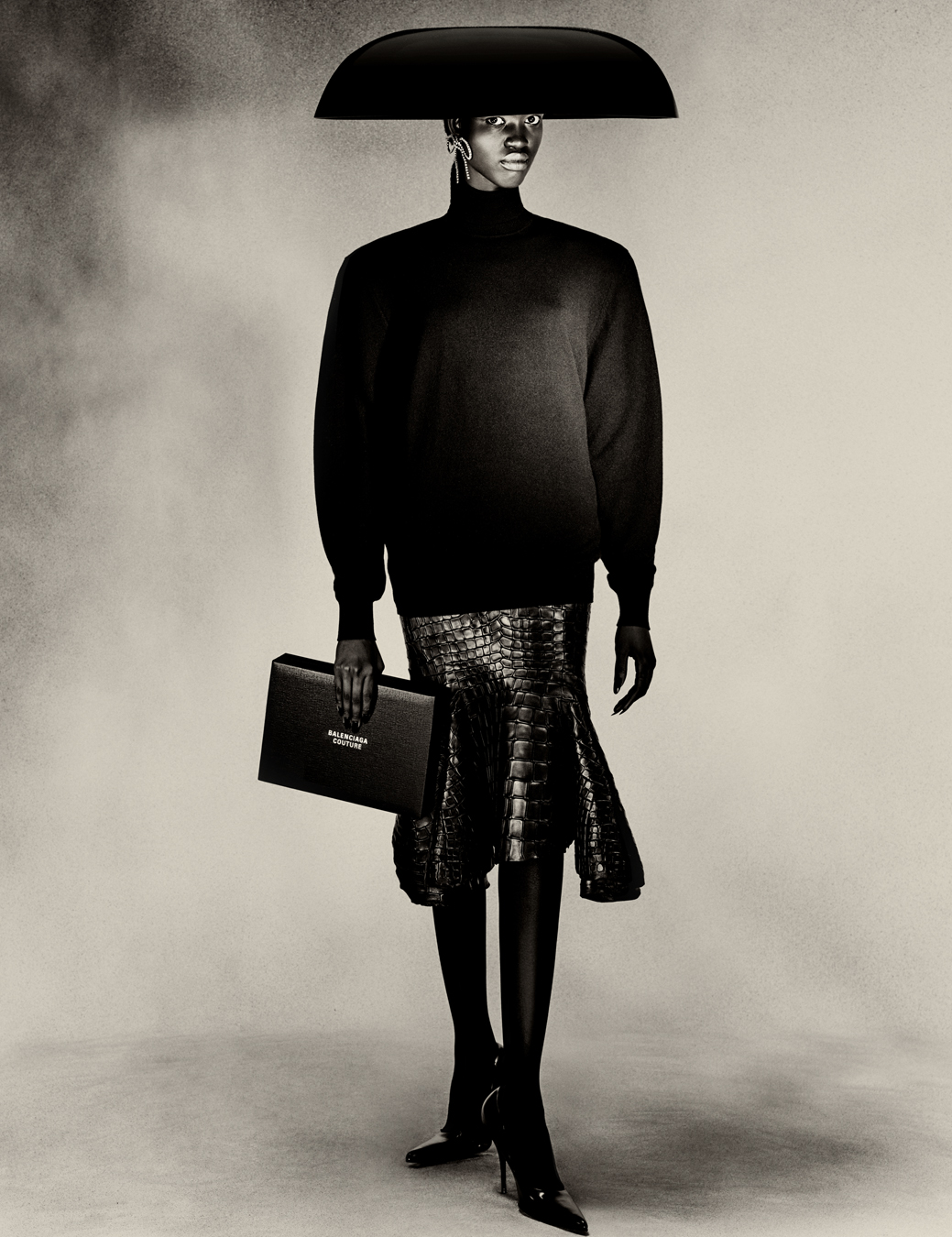
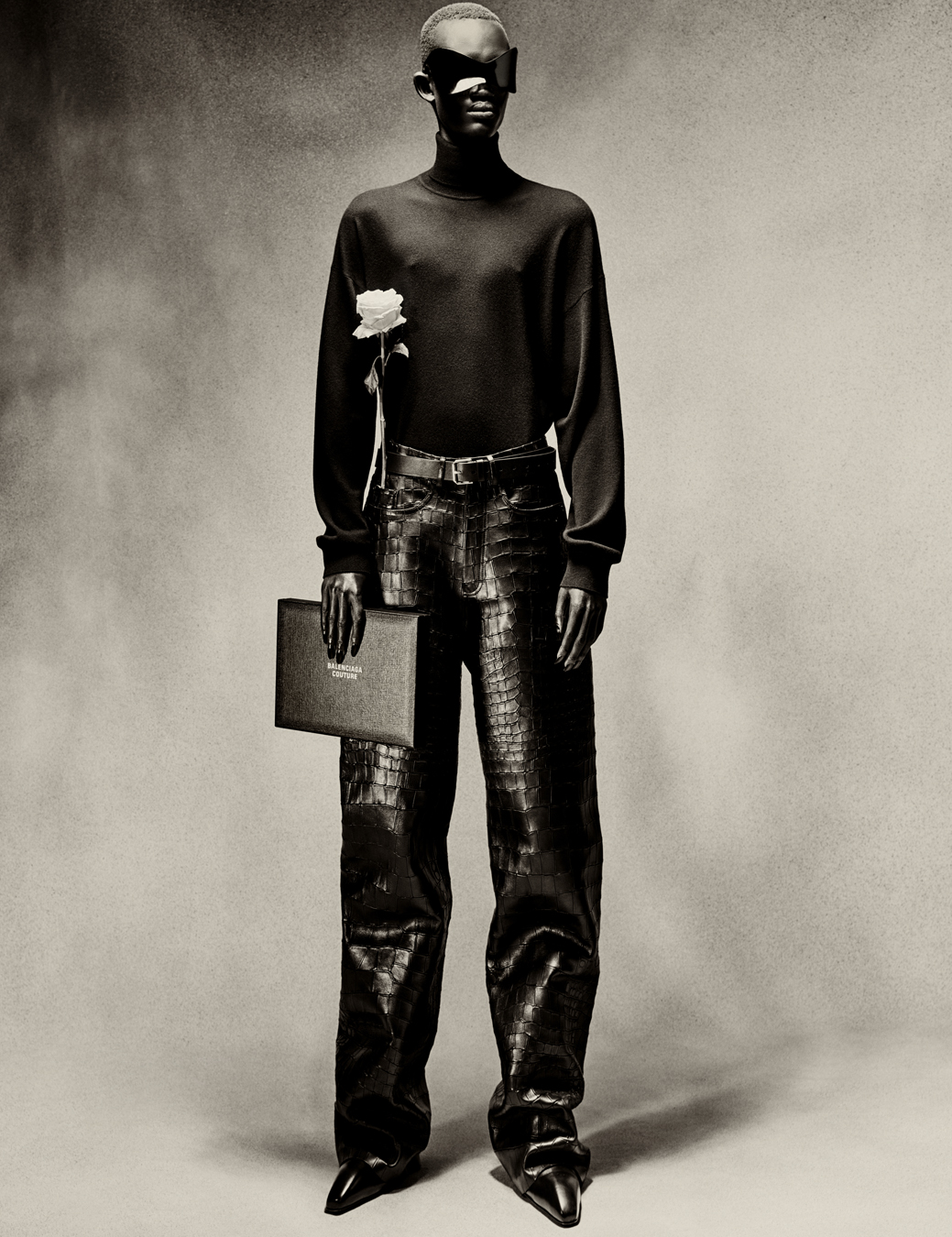
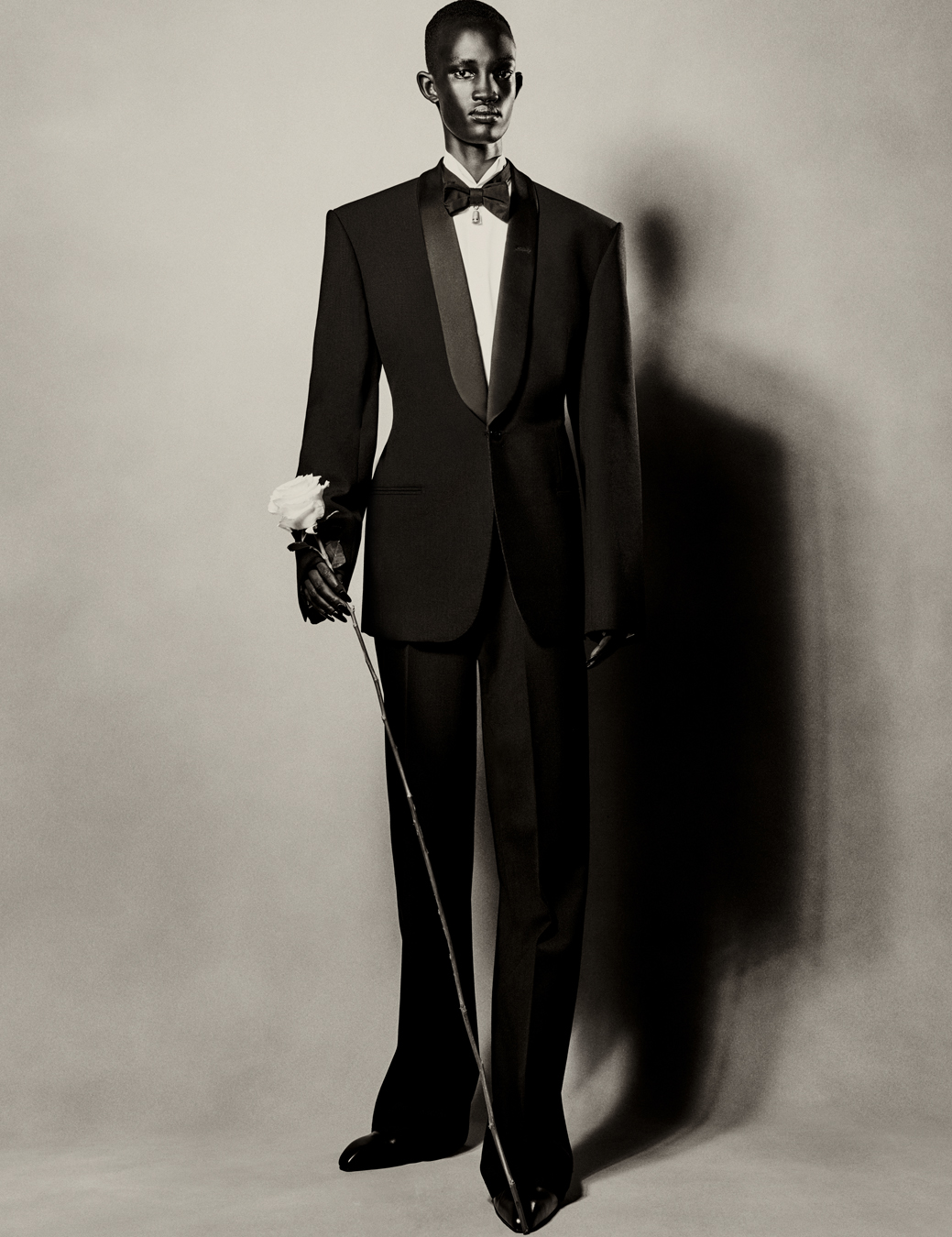
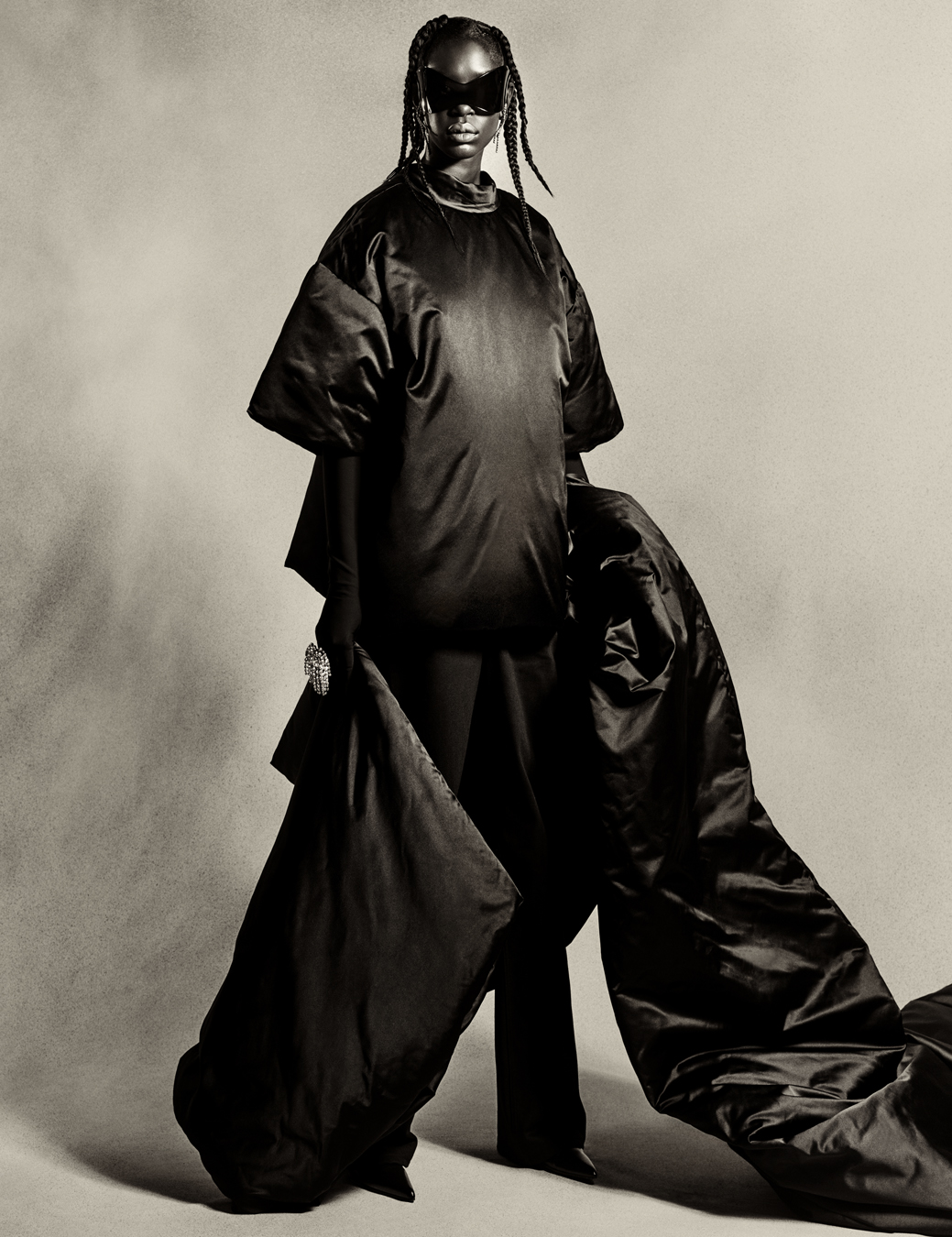
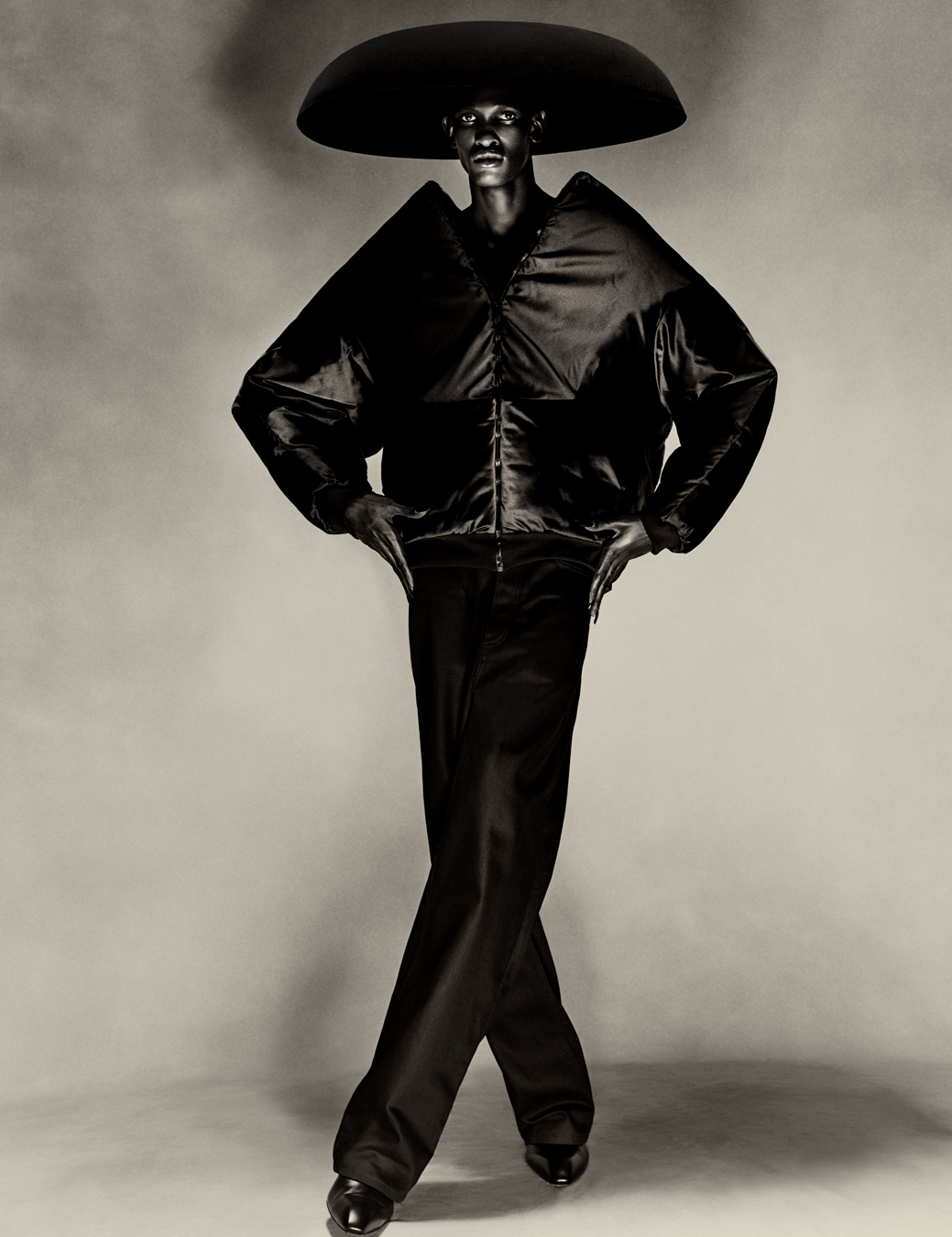
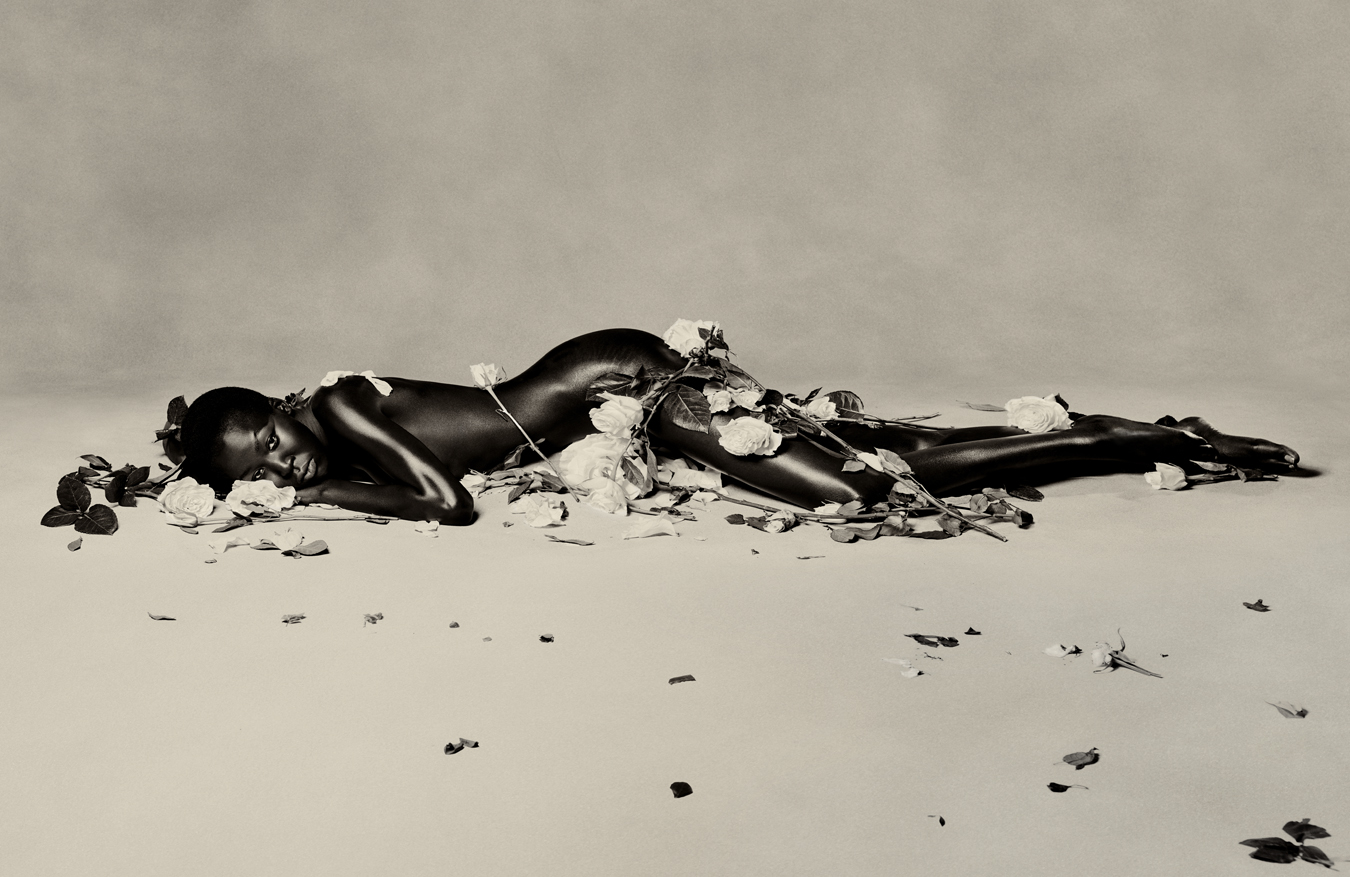
Credits
Photography Rafael Pavarotti
Fashion Alastair McKimm
Hair Anthony Turner at Streeters
Make-up Ammy Drammeh using Danessa Myricks Beauty
Nail technician Ama Quashie at Streeters using Gucci Beauty
Set design Ibby Njoya
Photography assistance Felix TW, Pedro Faria and Lucy Rooney
Digital operator Paul Allister
Fashion assistance Madison Matusich and Jermaine Daley
Hair assistance Claire Grech and Bianca Porter
Make- up assistance Isabel Seo, Chloe Palmer and Meg Kashimura
Nail technician assistance Aliyah Johnson and Georgia Hart
Set design assistance Axel Drury
Production Holmes Production
Casting director Samuel Ellis Scheinman for DMCASTING
Casting assistance Helena Balladino
Models Awut Atak at XDIRECTN, Sebrina Auma at D1LON, Ajayi Temitope at MILK, Mamau Bokum and Cheikh Tidiane Beye at 777, Goy Manase, Diana Achan and Simon Deu at PRM.
